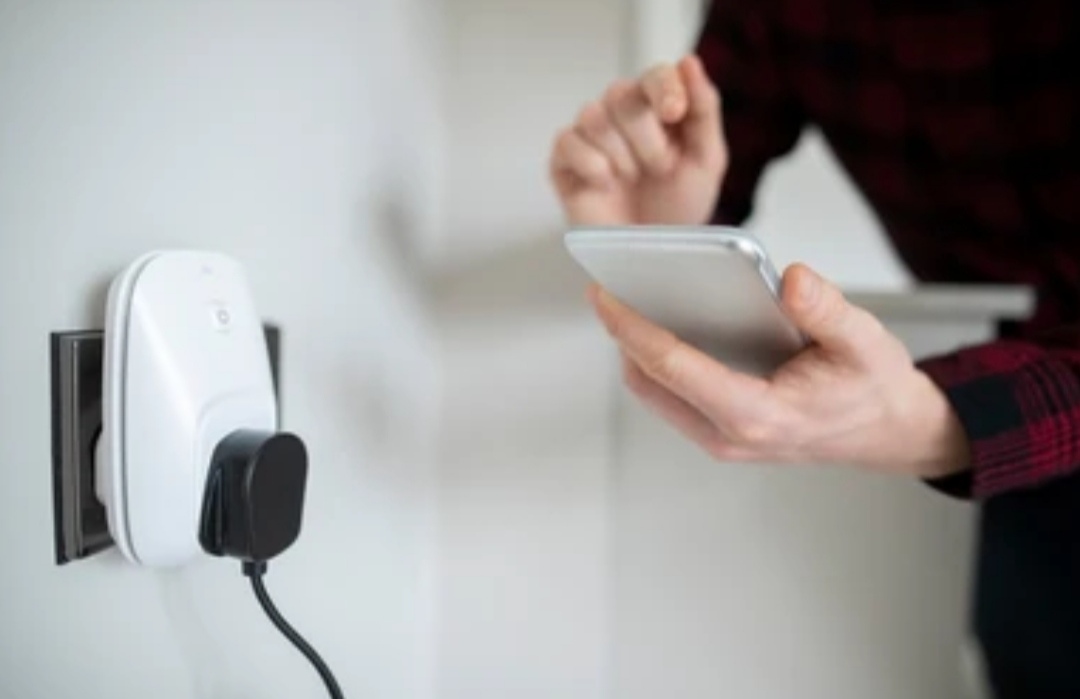Understanding Smart Plugs
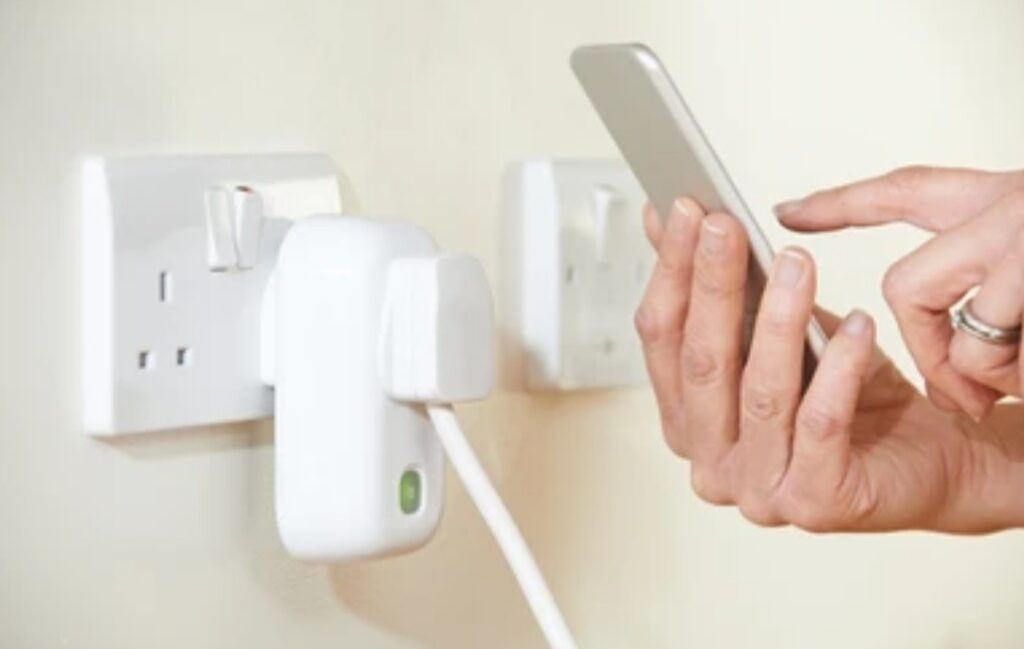
What Are Smart Plugs?
Smart plugs are one of the easiest and most affordable ways to start automating your home.
These compact devices plug directly into a standard wall outlet and turn ordinary household appliances into smart devices.
Once connected, you can control them remotely using a smartphone app or voice assistants like Amazon Alexa, Google Assistant, or Apple Siri.
With smart plugs, you can automate your home, save energy, improve security, and add convenience to your daily life.
Definition and Basic Functionality
A smart plug is a Wi-Fi-enabled or Bluetooth-enabled power adapter that acts as an intermediary between your electrical outlet and the device you want to control.
Instead of manually turning an appliance on or off, a smart plug allows you to:
- Control the device remotely via a mobile app
- Schedule automatic on/off times
- Monitor energy consumption (for energy-monitoring smart plugs)
- Automate multiple devices with routines and scenes
- Enhance safety by turning off dangerous appliances when not in use
For example, instead of waking up to manually turn on your coffee maker, you can set up a schedule where your smart plug automatically powers it on at 7:00 AM every morning.
Or, if you’re away from home, you can switch on your lights remotely to make it appear as if someone is home—improving security.
How Smart Plugs Integrate into a Smart Home Ecosystem
Smart plugs are designed to work seamlessly with a wide range of smart home ecosystems, allowing you to integrate them into your existing setup.
Many popular smart home platforms that support smart plugs include:
- Amazon Alexa – Control your devices with voice commands like “Alexa, turn off the bedroom lamp.”
- Google Assistant – Use commands like “Hey Google, turn on the coffee maker.”
- Apple HomeKit – Control smart plugs using Siri and integrate them with Apple’s smart home ecosystem.
- Samsung SmartThings – Connect multiple smart devices for advanced home automation.
- IFTTT (If This Then That) – Create automation rules that trigger actions between different smart devices.
By integrating with these platforms, you can:
✅ Control devices hands-free using voice commands.
✅ Create smart routines (e.g., “Turn off all devices at 10:00 PM”).
✅ Set up automation with sensors (e.g., “Turn on the fan when the temperature reaches 75°F”).
✅ Sync with other smart home devices (e.g., “Turn on the lights when you unlock the smart door lock”).
💡 Pro Tip: If you want to automate your entire home, choose a smart plug that is compatible with your preferred ecosystem to avoid connectivity issues.
Smart plugs are a powerful yet simple tool for making your home smarter without replacing your existing appliances.
They provide remote access, automation, energy savings, and security enhancements, all at an affordable price.
With the right setup, you can effortlessly manage your home appliances and create a more convenient, energy-efficient living space.
🔥 Ready to upgrade your home? Get your hands on the best smart plugs here today and start automating your devices! 🔥
Benefits of Using Smart Plugs
Smart plugs are more than just convenient gadgets—they are powerful tools that can enhance your home automation experience, improve energy efficiency, and boost security.
By integrating smart plugs into your home, you gain remote control over appliances, the ability to track energy consumption, and enhanced security features that help you manage your home with ease.
Here are some of the top benefits of using smart plugs and how they can make a difference in your daily life.
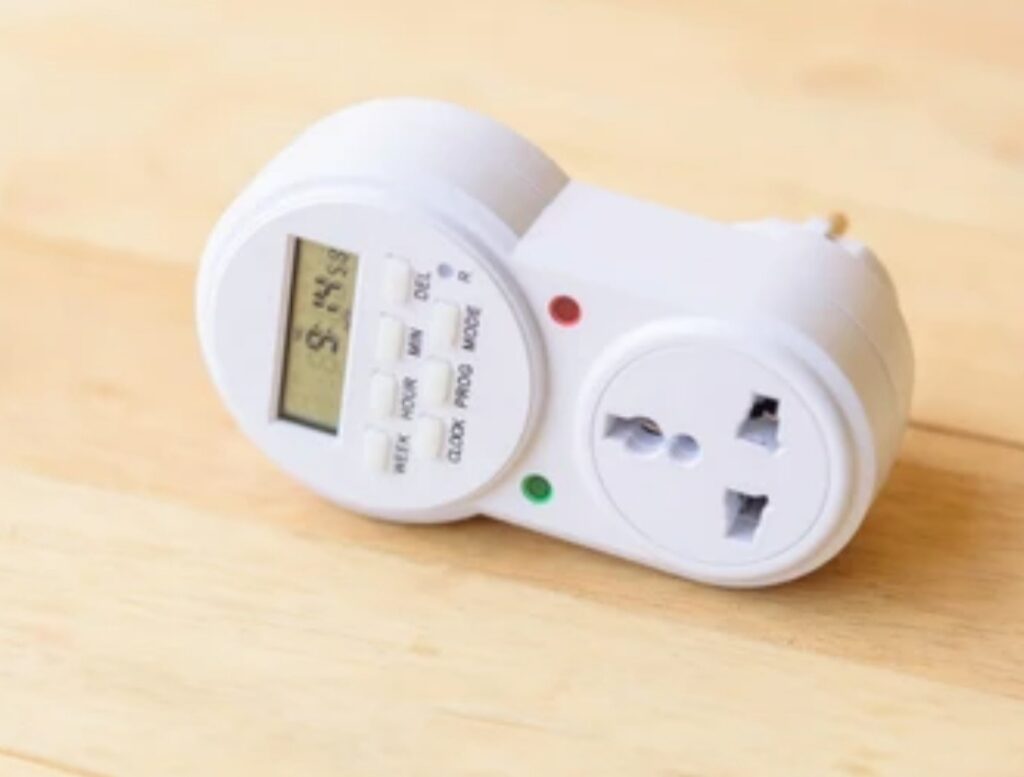
Remote Control of Devices
One of the biggest advantages of using smart plugs is the ability to control your devices from anywhere in the world.
Whether you’re at work, traveling, or simply in another room, a smart plug allows you to manage your appliances with just a tap on your smartphone.
How Remote Control Works
Once a smart plug is connected to your Wi-Fi network, you can control it using a mobile app provided by the manufacturer, such as:
- Amazon Alexa App (for Alexa-compatible smart plugs)
- Google Home App (for Google Assistant-enabled smart plugs)
- Apple Home App (for HomeKit-enabled smart plugs)
- Smart Life or Tuya App (for many third-party smart plugs)
From these apps, you can:
✅ Turn appliances on or off remotely—Perfect for when you forget to switch off a device before leaving home.
✅ Check device status in real-time—Know whether a lamp, heater, or TV is on or off.
✅ Receive notifications—Get alerts if a device is left on for too long.
✅ Integrate with voice assistants—Use voice commands like, “Hey Google, turn off the bedroom lamp.”
Real-World Uses for Remote Control
Imagine these scenarios:
- Left home in a hurry? Check and turn off your coffee maker or curling iron remotely.
- Want to come home to a warm house? Turn on your heater before arriving.
- Not sure if you turned off the iron? Use the app to check its status and switch it off remotely.
💡 Pro Tip: Smart plugs with built-in energy monitoring can also notify you if a device is using an unusual amount of power, helping you detect issues early.
Energy Monitoring and Efficiency
One of the best ways to reduce electricity bills is by tracking and managing energy consumption—and smart plugs make this easy.
Many modern smart plugs come with energy monitoring features that provide insights into how much power your devices are using.
How Energy Monitoring Works
Smart plugs with built-in energy tracking allow you to:
- View real-time and historical power usage of connected devices.
- Identify high-energy-consuming appliances that might be driving up your bills.
- Receive alerts for abnormal energy consumption (e.g., if a device is drawing power when it shouldn’t).
- Set power limits to automatically turn off devices after a certain energy usage threshold is reached.
Ways Smart Plugs Help Reduce Electricity Bills
By monitoring energy usage, you can take steps to reduce wasteful power consumption, such as:
✔️ Turning off devices when not in use—Eliminate phantom energy drain from appliances that stay on standby mode.
✔️ Scheduling devices—Ensure energy-hungry devices (like space heaters) only run when needed.
✔️ Using automation to optimize power usage—For example, set your gaming console to turn off at a specific time each night.
💡 Did You Know? Some smart plugs can estimate monthly electricity costs based on usage patterns, helping you make informed decisions about which appliances to upgrade or replace.
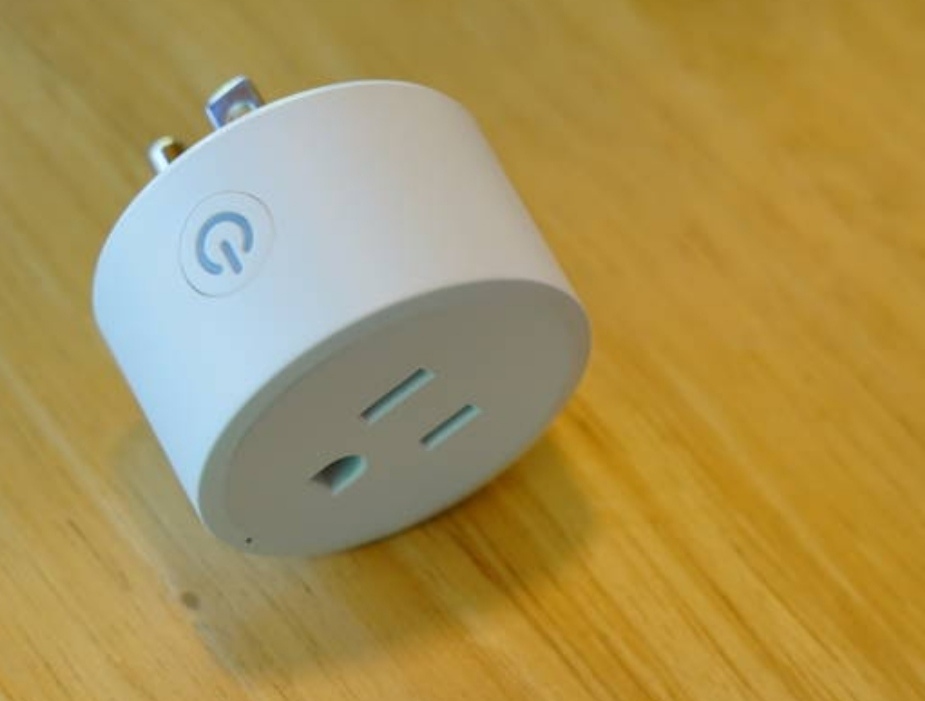
Enhanced Home Security
Smart plugs are a great way to improve home security, especially when you’re away.
By using scheduling features, you can make it appear as if someone is home—deterring burglars and intruders.
How Smart Plugs Improve Security
- Simulated Occupancy – Set up randomized lighting schedules to turn lamps on and off while you’re on vacation.
- Automated Outdoor Lighting – Use smart plugs to control porch and garden lights for better nighttime security.
- Remote Control of Security Devices – Turn security cameras or alarm systems on and off remotely.
Best Practices for Using Smart Plugs for Security
✅ Schedule indoor lights to turn on at different times in the evening.
✅ Use motion-sensing smart plugs to activate lights when movement is detected.
✅ Control holiday decorations remotely to maintain the illusion of occupancy.
💡 Pro Tip: Some smart plugs can be integrated with motion sensors or door sensors, so lights automatically turn on when someone enters a room or approaches your front door.
Convenience and Automation
One of the biggest reasons people use smart plugs is pure convenience.
With automation features, smart plugs can take care of daily tasks without you lifting a finger.
How Smart Plugs Simplify Daily Life
Smart plugs allow you to set schedules, routines, and automation for household devices.
Some examples include:
🕒 Scheduled Routines:
- Wake up to a freshly brewed coffee every morning by setting your coffee maker to turn on at 7:00 AM.
- Automatically turn off the TV at bedtime to help you maintain a healthy sleep schedule.
- Set humidifiers or air purifiers to run at night for better air quality.
🔄 Automation and Voice Control:
- Pair your smart plug with Alexa or Google Assistant to control devices with simple voice commands.
- Use motion sensors to trigger smart plugs when someone enters a room.
- Sync multiple devices together (e.g., turning off all electronics when leaving the house).
💡 Pro Tip: Many smart plugs support geofencing, which automatically turns devices on or off based on your location!
The benefits of using smart plugs go far beyond just turning devices on and off.
They provide remote control, energy savings, security enhancements, and automation—making life easier and more efficient.
Whether you want to reduce your electricity bills, improve home security, or automate daily routines, smart plugs are an affordable and effective way to upgrade your home.
🔥 Ready to experience the power of smart plugs? Check out the best smart plugs here and start automating your home today! 🔥
How to Set Up a Smart Plug
Setting up a smart plug is a quick and straightforward process, but choosing the right one and following the correct installation steps ensures a seamless experience.
In this section, we’ll cover:
✅ How to choose the right smart plug for your home
✅ Step-by-step installation guide
✅ How to integrate with voice assistants like Alexa, Google Assistant, and Siri
Let’s dive into the details!
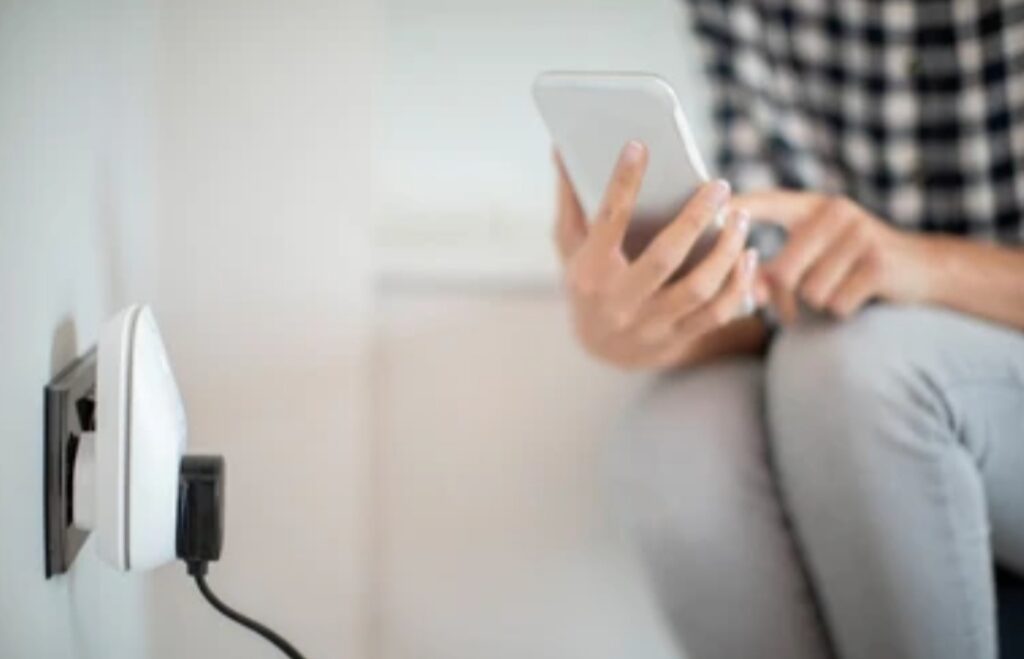
Choose the Right Smart Plug
Not all smart plugs are the same. Choosing the right one ensures smooth connectivity, compatibility with your devices, and an overall better smart home experience.
Factors to Consider When Selecting a Smart Plug
Before purchasing a smart plug, here are a few key things to check:
✔️ Compatibility with Your Smart Home System
- If you use Amazon Alexa, get a plug that supports Alexa integration.
- If you prefer Google Assistant, ensure it works with Google Home.
- For Apple users, pick a plug that’s HomeKit-compatible.
✔️ Wi-Fi or Bluetooth Connectivity
- Wi-Fi smart plugs connect directly to your home network and don’t require a hub.
- Bluetooth smart plugs may need you to be closer to control them.
- Some require a Zigbee or Z-Wave hub (like the Samsung SmartThings Hub).
✔️ Plug Type and Voltage Rating
- Make sure the smart plug fits your country’s power outlets.
- Check the maximum power load to avoid overloading the plug.
✔️ Energy Monitoring Feature
- Some smart plugs track electricity consumption, helping you save energy.
- If reducing electricity bills is your goal, get one with real-time energy tracking.
✔️ Indoor vs. Outdoor Use
- If using outdoors, ensure it’s weatherproof and rated for outdoor use.
💡 Pro Tip: If you plan to automate multiple appliances, consider buying a smart power strip instead of individual smart plugs.
Installation Steps
Once you’ve chosen the right smart plug, it’s time to set it up and connect it to your home network.
The setup process is typically simple and takes less than five minutes.
Plugging in the Smart Plug
1️⃣ Find a suitable outlet – Choose a wall socket near the device you want to control.
2️⃣ Insert the smart plug into the outlet – Make sure it’s firmly plugged in.
3️⃣ Wait for the indicator light – Most smart plugs have a flashing LED light, indicating it’s ready to connect.
💡 Did You Know? Some smart plugs block adjacent outlets due to their size. If this is a concern, opt for a compact design.
Connecting to Wi-Fi
To control your smart plug remotely, you must connect it to your home Wi-Fi network.
Steps to Connect Your Smart Plug to Wi-Fi:
1️⃣ Download the manufacturer’s app (e.g., TP-Link Kasa, Wemo, Smart Life, or Amazon Alexa).
2️⃣ Open the app and create an account (if you don’t already have one).
3️⃣ Tap “Add Device” and select “Smart Plug” from the list.
4️⃣ Turn on the smart plug and ensure it’s in pairing mode (LED light blinking).
5️⃣ Select your home Wi-Fi network and enter the password.
6️⃣ Wait for the plug to connect (this may take a few seconds).
7️⃣ Name your smart plug (e.g., “Living Room Lamp” or “Coffee Maker”).
💡 Troubleshooting Tips:
- Ensure you’re connecting to a 2.4GHz Wi-Fi network, as most smart plugs do not support 5GHz.
- If pairing fails, reset the smart plug by holding down the power button for 10 seconds.
Once connected, you can now turn your devices on or off remotely from the app!
Integrating with Voice Assistants
Want to control your smart plug with voice commands? You can link it with Amazon Alexa, Google Assistant, or Apple Siri for hands-free convenience.
How to Connect Your Smart Plug to Alexa:
1️⃣ Open the Amazon Alexa app.
2️⃣ Tap on Devices → Add Device → Plug.
3️⃣ Choose the smart plug brand from the list.
4️⃣ Sign in and authorize Alexa to control the smart plug.
5️⃣ Say, “Alexa, turn on device name.”
How to Connect Your Smart Plug to Google Assistant:
1️⃣ Open the Google Home app.
2️⃣ Tap + Add Device → Set up device.
3️⃣ Select “Works with Google” and find your smart plug brand.
4️⃣ Log in to link your account.
5️⃣ Test by saying, “Hey Google, turn off the coffee maker.”
How to Connect Your Smart Plug to Apple HomeKit:
1️⃣ Open the Apple Home app.
2️⃣ Tap + Add Accessory and scan the QR code on the plug.
3️⃣ Follow on-screen instructions to assign it to a room.
4️⃣ Control it using Siri commands like “Hey Siri, turn on the fan.”
💡 Pro Tip: You can create voice routines to automate multiple devices with a single command. For example, saying, “Alexa, good night” can turn off all smart plugs at once!
Setting up a smart plug is incredibly easy and can transform the way you manage your home appliances.
Once installed, you can:
✔️ Turn devices on and off remotely.
✔️ Automate appliances with schedules and timers.
✔️ Monitor energy consumption and reduce electricity bills.
✔️ Enhance convenience with voice control via Alexa, Google Assistant, or Siri.
🔥 Ready to experience the convenience of smart plugs? Get the best smart plug here and start automating your home today! 🔥
Creative Uses for Smart Plugs
Smart plugs are not just for turning devices on and off—they can revolutionize the way you manage your home.
With the right setup, they can automate appliances, enhance security, and add convenience to daily life.
Let’s explore some of the most creative ways to use smart plugs!
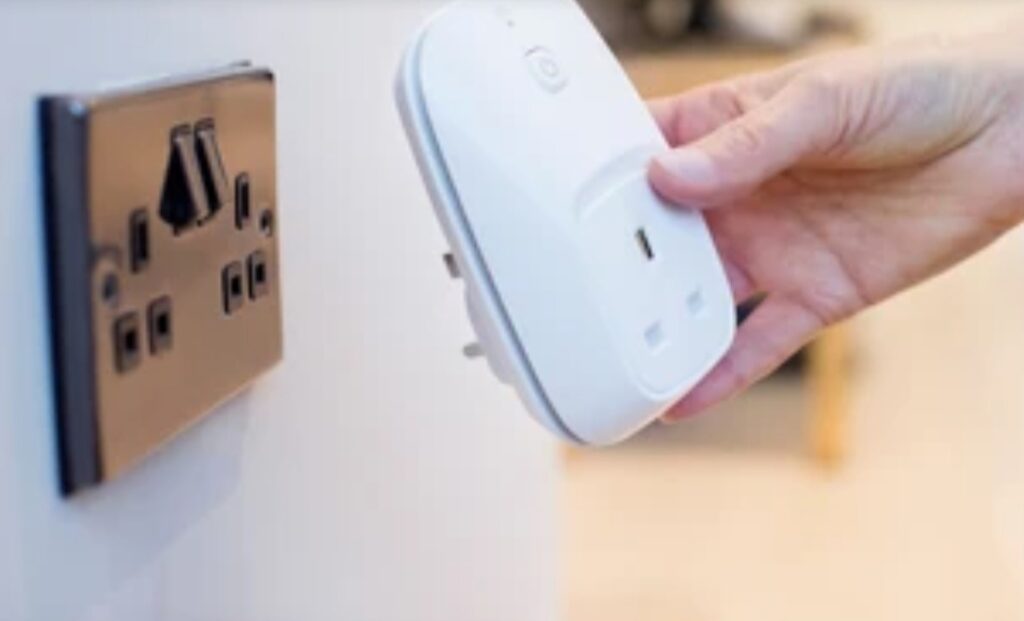
Automating Kitchen Appliances
Wouldn’t it be amazing to wake up to the smell of freshly brewed coffee or have dinner cooked before you even step into the kitchen?
With smart plugs, you can schedule and automate your kitchen appliances for a truly smart home experience.
How to Use Smart Plugs for Kitchen Automation
✅ Schedule Your Coffee Maker
- Set a timer for your coffee machine to start brewing in the morning.
- No more waiting—your coffee will be ready the moment you wake up.
✅ Control Your Slow Cooker Remotely
- Start your slow cooker from anywhere via your smartphone.
- Forget to turn it on before leaving home? No problem—just activate it remotely!
✅ Manage Other Kitchen Appliances
- Toasters, electric kettles, and blenders can all be turned on/off automatically.
- No need to manually power them down—let the smart plug handle it.
💡 Pro Tip: Combine your smart plug with a smart assistant (Alexa or Google Assistant) to activate appliances using voice commands.
🔥 Get a top-rated smart plug today and take your kitchen automation to the next level!
Managing Entertainment Systems
Ever wished you could turn off your entire entertainment system with a single tap?
With smart plugs, you can control TVs, gaming consoles, and speakers effortlessly!
How to Use Smart Plugs for Your Entertainment System
✅ Turn Off Your TV & Consoles Automatically
- Prevent energy waste by shutting off devices when they’re not in use.
- No more worrying about leaving the TV or PlayStation on overnight.
✅ Schedule Power to Your Speakers
- Automate your Bluetooth speakers to turn on at certain times.
- Wake up to your favorite playlist without manually switching them on.
✅ Create Movie Night Modes
- Connect a smart plug to your home theater system.
- With one tap, power on your entire setup (TV, speakers, ambient lighting).
💡 Pro Tip: Use routines in Alexa or Google Home to activate multiple devices at once—just say, “Alexa, start movie night!”
🔥 Upgrade your home entertainment with a smart plug that works with Alexa and Google Assistant now! 🔥

Enhancing Home Security
Did you know smart plugs can be one of the easiest ways to deter burglars?
By automating lights, TVs, and other electronics, you can create the illusion that someone is always home—even when you’re away.
How to Use Smart Plugs for Home Security
✅ Randomize Your Lighting Schedule
- Set your indoor and outdoor lights to turn on/off at different times.
- Make it look like someone is inside to deter intruders.
✅ Control Your TV & Radio Remotely
- Turn on a TV or radio while on vacation to create activity sounds.
- Potential burglars will think someone is home, reducing the risk of break-ins.
✅ Power Your Home Security System
- Connect Wi-Fi cameras or alarm systems to a smart plug.
- Restart them remotely if they stop working.
💡 Pro Tip: Use “Away Mode” in smart home apps to turn lights on/off at random times for added security.
🔥 Protect your home today with a reliable smart plug that automates your security setup! 🔥
Seasonal Decorations
Tired of plugging and unplugging holiday lights every day?
With a smart plug, you can automate Christmas lights, Halloween decorations, and other seasonal displays effortlessly.
How to Use Smart Plugs for Holiday Decorations
✅ Set a Timer for Christmas Lights
- Schedule your Christmas tree lights to turn on at sunset and off at bedtime.
- No need to crawl under the tree to unplug them manually.
✅ Automate Outdoor Decorations
- Use a weatherproof smart plug to control outdoor holiday displays.
- Light up your yard without stepping outside in the cold.
✅ Sync Lights to Music
- Some smart plugs allow you to connect lights to music, creating an immersive experience.
- Perfect for Christmas, Halloween, or birthday parties!
💡 Pro Tip: Use Alexa or Google Assistant to turn on decorations with a voice command like “Alexa, turn on Christmas lights!”
🔥 Make holiday decorating effortless with a smart plug that automates your festive setup! 🔥
Smart plugs are more than just simple on/off switches—they can completely transform the way you manage your home.
With creative uses like:
✔️ Automating kitchen appliances for added convenience
✔️ Managing entertainment systems with ease
✔️ Enhancing home security with randomized schedules
✔️ Controlling seasonal decorations automatically
…you can upgrade your smart home experience effortlessly.
🚀 Ready to take control of your home? Get the best smart plug today and start automating your life! 🚀
Safety Considerations for Smart Plugs
While smart plugs offer convenience, automation, and energy efficiency, it’s crucial to use them safely.
Like any electrical device, improper use can lead to overheating, security risks, or device malfunctions.
To ensure optimal safety and performance, follow these key safety considerations before using a smart plug.
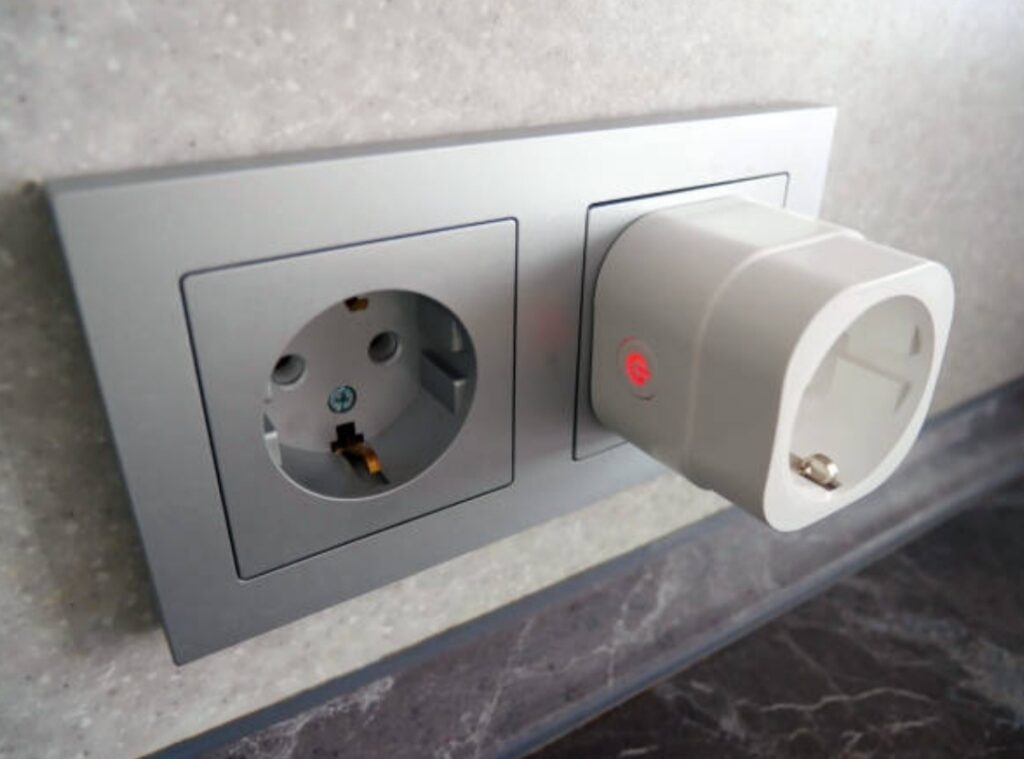
Electrical Load Capacity – Avoid Overloading Your Smart Plug
One of the most important safety aspects of using a smart plug is understanding its electrical load capacity.
If you plug in a device that exceeds the smart plug’s power rating, it can cause:
⚠️ Overheating – Leading to fire hazards or damage to the smart plug.
⚠️ Short circuits – Which can affect your home’s electrical system.
⚠️ Device failure – Your smart plug may stop working prematurely.
How to Check the Electrical Load Capacity
✅ Find the wattage rating on the smart plug’s specifications
- Most standard smart plugs support up to 1,800 watts (15 amps at 120V).
- High-power appliances like heaters require special heavy-duty smart plugs.
✅ Check the power consumption of your devices
- Common household appliances and their power usage:
- Lamps: ~60-100W
- Coffee makers: ~900-1,200W
- Microwaves: ~800-1,500W
- Space heaters: ~1,500W (can overload standard smart plugs!)
✅ Use heavy-duty smart plugs for high-power appliances
- If you plan to use a space heater, air conditioner, or other high-wattage devices, invest in a heavy-duty smart plug that supports higher wattage.
💡 Pro Tip: Never plug in multiple high-wattage appliances into the same smart plug using an extension cord—this increases the risk of electrical fires.
🔥 Upgrade to a high-capacity smart plug to ensure safety for your high-power appliances! 🔥
Regular Firmware Updates – Keep Your Smart Plug Secure
Smart plugs connect to your Wi-Fi, making them vulnerable to hacking if not properly secured.
Manufacturers release firmware updates to fix:
🔒 Security vulnerabilities – Hackers can exploit outdated firmware to access your devices.
🔧 Bug fixes – Resolves performance issues and improves reliability.
🚀 New features – Adds compatibility with Alexa, Google Home, and other smart ecosystems.
How to Keep Your Smart Plug Updated
✅ Download the manufacturer’s app
- Most smart plug brands have an official app where you can check for updates.
✅ Enable automatic updates
- Some smart plugs update automatically when connected to Wi-Fi.
- Check your app settings to ensure updates are turned on.
✅ Check for firmware updates regularly
- If your smart plug does not update automatically, manually check for new updates once a month.
💡 Pro Tip: If your smart plug frequently disconnects from Wi-Fi, a firmware update may fix the issue.
🔥 Protect your devices with a smart plug that offers regular security updates! 🔥
Secure Network Practices – Protect Your Smart Home
Since smart plugs rely on Wi-Fi, it’s essential to follow strong security practices to prevent hacking and unauthorized access.
How to Use Smart Plugs Securely
✅ Use a strong, unique Wi-Fi password
- Avoid using default passwords like “123456” or “password”.
- A strong password should include uppercase, lowercase, numbers, and special characters.
✅ Enable WPA3 or WPA2 encryption on your Wi-Fi router
- This prevents hackers from accessing your smart home devices.
- Check your router settings to enable the latest security protocol.
✅ Create a separate Wi-Fi network for smart devices
- Set up a guest network for smart plugs, cameras, and other IoT devices.
- This ensures that hackers cannot access your main network.
✅ Turn off remote access if you don’t need it
- Some smart plugs allow remote control from anywhere.
- If you only use your smart plug at home, disable this feature to reduce security risks.
💡 Pro Tip: Use a trusted VPN on your router to add an extra layer of security to all smart devices in your home.
🔥 Secure your smart home with a high-security smart plug that supports encrypted connections! 🔥
Smart Plug Safety First!
Smart plugs are incredibly useful, but safety should always come first.
By following these safety considerations, you can avoid electrical hazards, security risks, and device failures:
✔️ Check electrical load capacity before plugging in appliances
✔️ Regularly update firmware to patch security vulnerabilities
✔️ Use strong passwords and Wi-Fi security protocols
With proper setup and maintenance, smart plugs will enhance your home’s convenience and efficiency—without compromising safety.
🚀 Ready to automate your home the smart and safe way? Get the best-rated smart plug today! 🚀
Troubleshooting Common Issues with Smart Plugs
Smart plugs are designed to simplify home automation, but like any smart device, they can sometimes experience connectivity issues, unresponsiveness, or setup failures.
If your smart plug isn’t working as expected, don’t worry!
Here’s a detailed guide to troubleshoot common smart plug problems and get them back up and running smoothly.

Connectivity Problems – How to Fix Wi-Fi Connection Issues
One of the most common problems with smart plugs is losing Wi-Fi connectivity.
Since smart plugs rely on a stable internet connection to function, a weak signal or incorrect settings can cause them to disconnect or become unresponsive.
Common Causes of Smart Plug Wi-Fi Issues
📶 Weak Wi-Fi Signal:
- If your smart plug is too far from the router, it may struggle to maintain a connection.
🔄 Dual-Band Router Conflicts:
- Some smart plugs only work on 2.4GHz Wi-Fi, but many routers default to 5GHz.
❌ Incorrect Wi-Fi Credentials:
- If you’ve changed your Wi-Fi password, the smart plug won’t reconnect automatically.
🚫 Router Settings Blocking the Smart Plug:
- Some routers block new devices for security reasons unless manually allowed.
Step-by-Step Fix for Smart Plug Wi-Fi Problems
✅ Step 1: Move the Smart Plug Closer to the Router
- Try plugging the smart plug into an outlet closer to your router to see if the issue is signal strength.
- If it connects successfully, weak Wi-Fi may be the issue.
- Consider using a Wi-Fi extender or a mesh network to improve coverage.
✅ Step 2: Check Wi-Fi Frequency (Use 2.4GHz, Not 5GHz)
- Many smart plugs only work on 2.4GHz Wi-Fi networks.
- Log into your router settings and ensure the 2.4GHz band is enabled.
- If your router automatically switches between 2.4GHz and 5GHz, try disabling band steering and connect manually.
✅ Step 3: Reset Wi-Fi Credentials in the Smart Plug App
- Open the smart plug’s app and check if the Wi-Fi settings are correct.
- If your Wi-Fi password has changed recently, update it in the app.
✅ Step 4: Restart Your Router
- Unplug your Wi-Fi router and modem, wait 30 seconds, and plug them back in.
- Once your Wi-Fi is back online, try reconnecting the smart plug.
✅ Step 5: Disable VPN or Firewall Blocking the Smart Plug
- Some routers have firewalls that block new devices.
- Go to your router’s settings and check if the smart plug is listed under connected devices.
- If not, manually allow it or disable security settings that may be blocking it.
💡 Pro Tip: If your router supports guest Wi-Fi, create a separate 2.4GHz guest network and connect the smart plug to that for better stability.
🔥 Still having issues? Try using a smart plug with a stronger Wi-Fi antenna to improve connectivity! 🔥
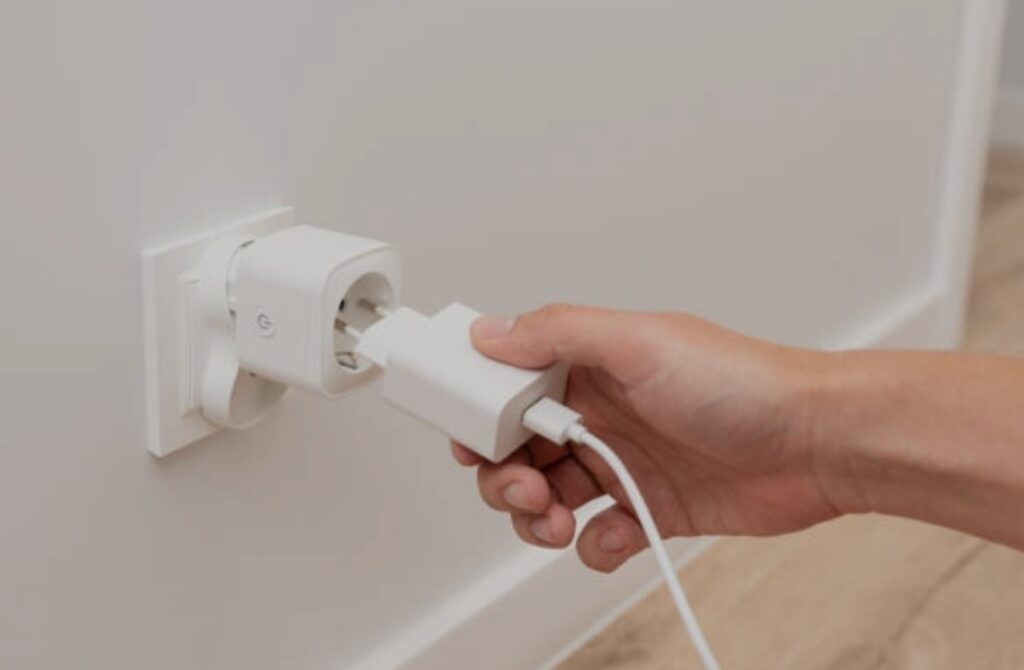
Unresponsive Devices – How to Reset or Reconfigure Your Smart Plug
If your smart plug isn’t responding to commands, doesn’t turn on/off properly, or isn’t detected in the app, a reset or reconfiguration may be required.
Common Causes of an Unresponsive Smart Plug
🔌 Power Supply Issues:
- The smart plug might not be getting power due to a faulty outlet or loose connection.
📡 Wi-Fi Disconnection:
- If the smart plug was previously connected, it may have lost its Wi-Fi connection.
⚙️ Outdated Firmware or App Issues:
- If the smart plug’s firmware is outdated, it may stop functioning properly.
🔄 Software Bugs or Glitches:
- A minor bug in the smart plug app or the device itself can cause unresponsiveness.
How to Fix an Unresponsive Smart Plug
✅ Step 1: Check the Power Outlet
- Plug the smart plug into a different outlet to see if it turns on.
- If the indicator light doesn’t appear, the plug may be faulty or the outlet isn’t working.
✅ Step 2: Manually Turn the Smart Plug On/Off
- Many smart plugs have a physical power button.
- Press and hold the button for 5-10 seconds to manually restart it.
✅ Step 3: Reconnect the Smart Plug to Wi-Fi
- Open the smart plug’s app and check if the device appears online.
- If it’s offline, go to the Wi-Fi settings and reconnect it.
✅ Step 4: Update Firmware and Smart Plug App
- Check the smart plug app for any available firmware updates.
- If an update is available, install it and restart the device.
✅ Step 5: Perform a Factory Reset
- If all else fails, you may need to reset the smart plug to factory settings.
- Follow these steps:
- Press and hold the reset button (usually for 10-20 seconds).
- Wait for the indicator light to flash, signaling that the reset is complete.
- Reconnect the smart plug to your Wi-Fi through the app.
✅ Step 6: Delete and Reinstall the Smart Plug App
- If the app isn’t detecting your device, try uninstalling and reinstalling it.
- Once reinstalled, follow the setup process from the beginning.
💡 Pro Tip: Some smart plugs require a specific app for initial setup—always download the official manufacturer’s app for best results.
🔥 Upgrade to a smart plug with auto-reconnect features to avoid future issues!
Get Your Smart Plug Running Smoothly!
If your smart plug is having connectivity issues or isn’t responding, follow these troubleshooting steps to fix the problem quickly:
✔️ Ensure a strong Wi-Fi signal by using 2.4GHz and keeping the plug close to the router
✔️ Manually reset or reconnect the device if it becomes unresponsive
✔️ Update firmware regularly to prevent security risks and software bugs
By taking these steps, you can keep your smart plug running smoothly and enjoy hassle-free home automation.
🚀 Ready to upgrade? Get a reliable smart plug that offers seamless Wi-Fi connectivity and smart automation! 🚀
Future Trends in Smart Plugs – What’s Next in Home Automation?
Smart plugs have revolutionized the way we interact with home appliances, offering remote control, energy savings, and automation.
But what does the future hold for these devices?
As smart home technology evolves, smart plugs are becoming more advanced, intelligent, and seamlessly integrated into broader ecosystems.
From better connectivity to AI-powered automation, the next generation of smart plugs will redefine how we interact with our homes.
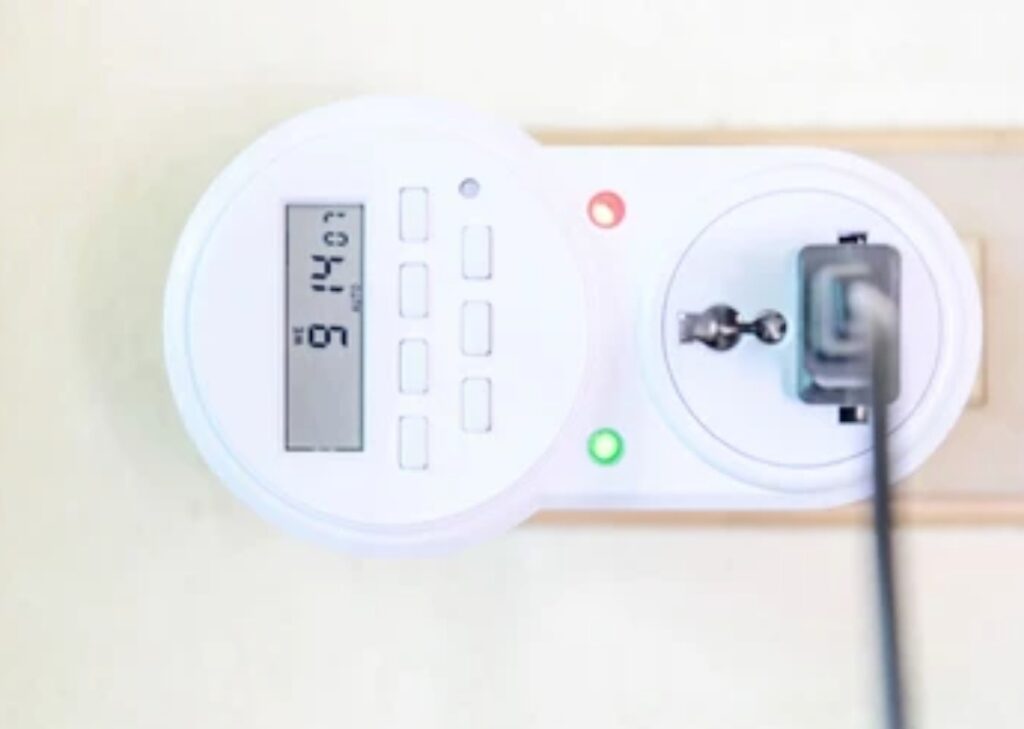
Integration with Other Smart Devices – The Rise of a Fully Connected Smart Home
Smart plugs are no longer just standalone devices.
They are increasingly becoming a part of interconnected smart home ecosystems, allowing users to create more complex automations and enhance overall convenience.
How Smart Plugs Are Evolving to Work with Broader Smart Home Systems
📲 Voice Assistant Compatibility Expansion
- While most smart plugs already work with Alexa, Google Assistant, and Siri, future models will support even more voice assistants.
- Expect deeper AI-driven interactions where a smart plug can predict when to turn devices on/off based on voice patterns.
🌎 Matter & Thread – A Universal Smart Home Standard
- The introduction of Matter, a new industry-wide standard, is set to make smart plug compatibility more seamless.
- Future smart plugs will no longer be limited to specific brands—instead, they will work with Apple HomeKit, Samsung SmartThings, Google Home, and Amazon Alexa without additional hubs.
- Thread technology will also improve speed and reliability, ensuring instant responses from smart plugs.
🏠 Smart Plugs That Work with Home Automation Platforms
- Many smart plugs are already compatible with IFTTT (If This Then That), allowing users to create custom automation routines.
- The next generation will take it further, integrating with advanced home automation systems like Home Assistant and Hubitat, making smart home control more powerful.
- Example:
- If a security camera detects motion, a smart plug could turn on a connected lamp automatically.
- If your thermostat detects a temperature drop, it could activate a space heater through a smart plug.
📡 5G & Wi-Fi 6 Integration
- Many smart plugs currently rely on Wi-Fi or Bluetooth, but the future will bring 5G-enabled smart plugs for even faster, more stable connectivity.
- Wi-Fi 6 support will also reduce latency, ensuring that smart plugs respond instantly to commands.
🔄 Self-Learning & AI-Driven Automation
- Future smart plugs will learn user behavior and automate tasks based on patterns.
- For example:
- If you always turn on your coffee maker at 7 AM, the smart plug will do it automatically without you needing to schedule it.
- AI-powered smart plugs could detect when you leave home and turn off all unnecessary appliances to save power.
💡 Pro Tip: Looking for a future-proof option? Consider upgrading to a Matter-compatible smart plug that ensures seamless integration with all smart home ecosystems!
Advancements in Energy Monitoring – Smarter Ways to Track & Reduce Power Consumption
One of the biggest trends in smart plug technology is the advancement of energy monitoring capabilities.
Consumers are becoming more conscious of their energy usage, and manufacturers are responding by developing smart plugs with advanced tracking features.
Emerging Features for More Detailed Energy Usage Insights
📊 Real-Time Energy Tracking
- Many modern smart plugs already display basic energy consumption data, but future models will offer more granular details.
- Expect real-time tracking down to the second, showing instantaneous power usage for connected devices.
- Users will be able to see live updates via smartphone apps, helping them make smarter decisions on energy consumption.
📅 Historical Energy Reports & AI-Powered Insights
- Future smart plugs will not only track energy usage but also provide AI-driven recommendations on how to reduce waste.
- Monthly and weekly reports will break down usage patterns and suggest ways to save power.
- Example:
- If a plug detects that a TV is running unnecessarily, it will recommend setting up an automatic shutoff schedule.
⚡ Peak Hour Power Optimization
- Some electricity providers charge higher rates during peak hours.
- Future smart plugs will automatically adjust power consumption to avoid unnecessary usage during expensive time slots.
- Example:
- A smart plug connected to a washing machine might delay operation until off-peak hours, reducing energy costs.
🔋 Battery Backup & Power Outage Detection
- Advanced smart plugs will come with built-in battery backups that allow them to function even during brief power outages.
- They will also notify users if there is a power cut, so they can take action if necessary.
📡 Integration with Renewable Energy Systems
- Future smart plugs will sync with solar panels and home battery storage systems, ensuring that appliances run on clean energy whenever available.
- If solar power is low, the plug may automatically switch the device off to conserve stored energy.
🔄 Remote Energy Control via Smart Grid Compatibility
- Some future smart plugs will be compatible with smart grids, allowing energy providers to remotely adjust power consumption to balance demand.
- Users will receive alerts when electricity prices drop, enabling them to run energy-heavy devices at the lowest cost.
💡 Pro Tip: Want to reduce energy costs? Invest in a smart plug with AI-powered energy monitoring that helps you cut down on wasted electricity!
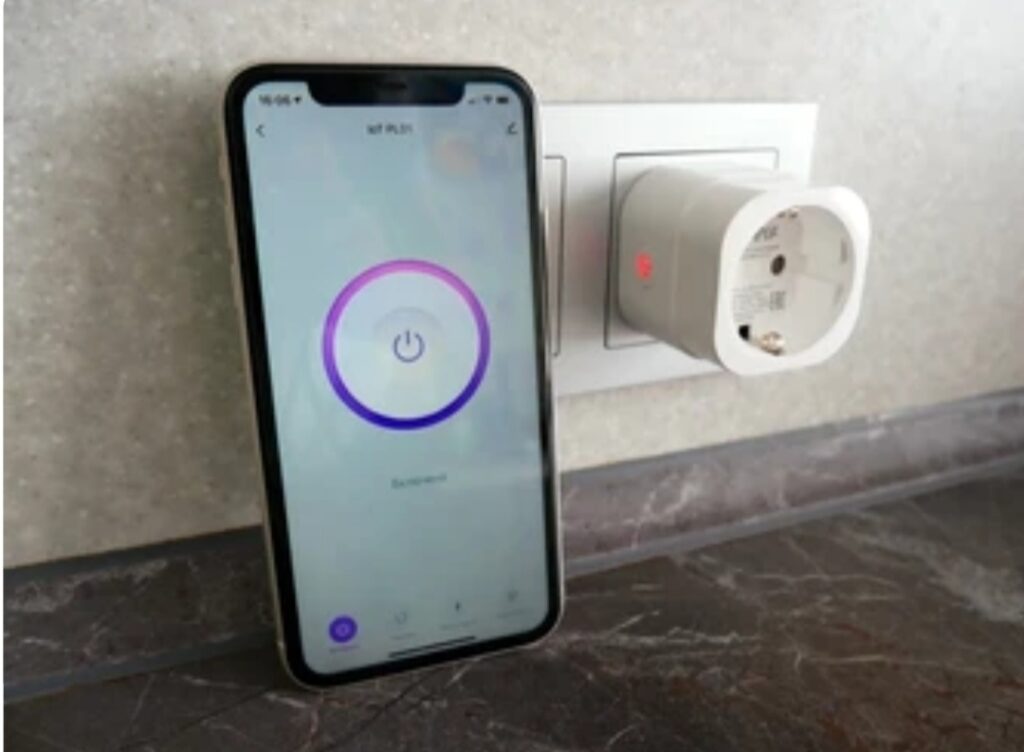
The Future of Smart Plugs Looks Promising!
Smart plugs are evolving rapidly, offering better connectivity, automation, and energy efficiency.
If you’re considering how to use smart plugs to their full potential, now is the perfect time to invest in the latest technology.
🚀 Key Takeaways:
✔️ Future smart plugs will seamlessly integrate with smart home ecosystems, supporting Matter, Thread, and AI automation.
✔️ Advanced energy monitoring features will provide real-time tracking, AI-powered reports, and peak-hour optimization.
✔️ Wi-Fi 6 and 5G connectivity will make smart plugs faster, more stable, and more reliable.
🔴 Ready to upgrade? Check out the best future-proof smart plugs that offer AI automation and real-time energy tracking! 🔴
Conclusion – Why Smart Plugs Are a Must-Have for Every Home
Smart plugs are more than just a convenient way to control appliances remotely.
They are a game-changer for home automation, energy efficiency, and security.
If you’ve been wondering how to use smart plugs to improve your daily routine, now is the perfect time to embrace this technology.
With features like AI-powered automation, real-time energy monitoring, and seamless integration with smart home ecosystems, smart plugs offer a simple yet powerful way to upgrade your home.
Let’s take a final look at the key benefits of smart plugs and why they are the perfect first step into home automation.
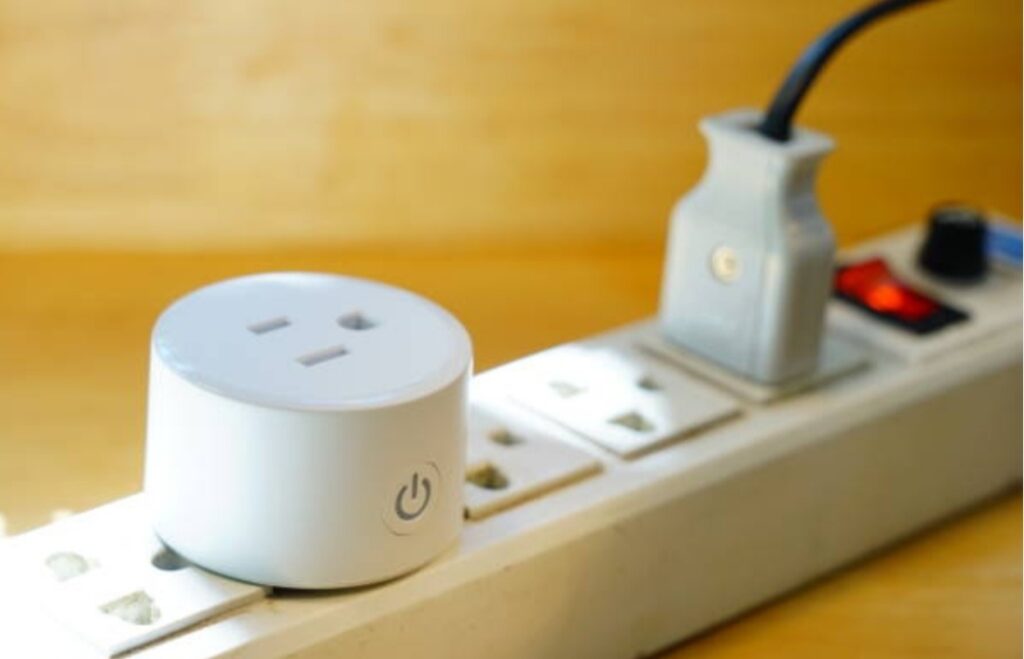
Recap of Benefits – How Smart Plugs Enhance Convenience, Security, and Energy Efficiency
Smart plugs are small but mighty.
They transform ordinary appliances into smart devices, giving you greater control, efficiency, and peace of mind.
Here’s why every modern home should have at least one smart plug:
✅ Convenience – Control Your Home with a Tap or Voice Command
- Imagine turning on your coffee maker from bed with just a voice command.
- Need to turn off the living room lamp? Do it remotely via your smartphone.
- Forgot to unplug your curling iron? A smart plug lets you shut it off from anywhere.
- Schedule appliances to turn on or off automatically, so you never have to worry about manual switches.
- Set up routines with Alexa, Google Assistant, or Siri to automate your daily tasks effortlessly.
🔹 Example:
If you always turn off your fan before leaving for work, a smart plug can do it automatically at a set time every day.
🔐 Security – Keep Your Home Safe, Even When You’re Away
- Use “Away Mode” to randomly turn lights on and off, making it look like someone is home even when you’re on vacation.
- Prevent overheating and fire hazards by remotely cutting power to risky appliances.
- Get real-time alerts when a connected device is turned on unexpectedly.
- Integrate with security systems to turn on lights when motion is detected.
🔹 Example:
If you’re traveling, a smart plug can turn on your porch light at sunset and off at sunrise, enhancing home security.
💡 Energy Efficiency – Reduce Wasted Electricity & Lower Your Bills
- Monitor real-time energy usage to see which devices consume the most power.
- Set schedules to ensure energy-draining appliances turn off when not needed.
- Some smart plugs even detect unused devices and automatically cut power to reduce electricity waste.
- Take advantage of off-peak hours by scheduling high-energy appliances to run when electricity rates are lower.
🔹 Example:
A smart plug connected to a TV or gaming console can shut off power completely instead of leaving it in standby mode, saving you money on electricity bills.
💡 Pro Tip: Want to save even more? Check out a smart plug with built-in energy monitoring to track and optimize your power consumption!
Encouragement to Embrace Smart Home Technology – Start with Smart Plugs!
If you’ve been thinking about upgrading to a smart home, there’s no better place to start than smart plugs.
Unlike expensive smart home hubs or complex automation systems, smart plugs are:
✅ Affordable – No need for expensive setups.
✅ Easy to Install – Just plug them in and connect to Wi-Fi.
✅ Highly Versatile – Control lights, fans, coffee makers, TVs, and more.
✅ Beginner-Friendly – No technical knowledge required!
🚀 Smart Plugs – The First Step Toward a Smarter Home
Many people hesitate to invest in smart home technology because they think it’s complicated.
But with smart plugs, you get instant automation with minimal effort.
You don’t need to replace your appliances – just plug them into a smart plug, and you’re ready to go.
🔹 Want to go further?
- Once you get comfortable using smart plugs, you can expand to smart bulbs, smart thermostats, and even smart security systems.
- Smart plugs teach you how home automation works, making it easier to integrate more devices in the future.
💡 Did You Know? Many smart plugs are now compatible with Matter and Thread, meaning they will work seamlessly with future smart home devices!
🔥 Ready to Upgrade Your Home? Start with a Smart Plug Today!
Smart plugs offer a simple, affordable, and powerful way to make everyday life easier, save money, and improve home security.
If you’re still wondering how to use smart plugs to their full potential, the answer is simple: just start!
🔴 Get started with the best smart plug for your home today! 🔴
You might also like :

